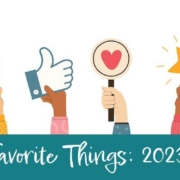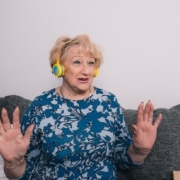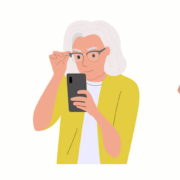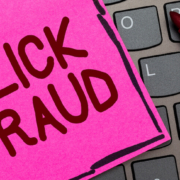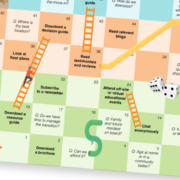In May 2023, the paid media team at Senior Living SMART first began to hear that a few clients were getting unqualified leads from Google Ads.
This isn’t completely unusual – any marketing strategy will always bring in unqualified leads to some extent, and marketing in the senior living industry is no exception.
But these complaints were different. They were specific. They were unsettling. They told us that something else was happening that we weren’t seeing in our regular work.
By the beginning of June, nearly every client who ran a paid ad campaign with SLS was telling us the same thing – they were getting a huge influx of bizarre leads who didn’t even come close to meeting qualification requirements.
In fact, these leads weren’t even close to what any client was targeting. But they all shared similar criteria. These leads:
- Wanted senior housing for $300 per month
- Spoke with accents of different languages
- Sought employment (even though we weren’t running recruitment ads)
- Used fake names
- Didn’t respond to sales follow ups
Who were these leads? How did they find our clients? Most importantly, how were we going to make it stop?
The paid media team at SLS spent months trying to answer these questions, among others. It took over our daily work, and we spent meeting after meeting brainstorming, theory-crafting, implementing, and going back to the drawing board.
But one day, we got it, and once we did, it saved our clients $26,000 in 10 weeks.
Further Reading: “Deceptive ad practices frustrate providers by generating excessive, financially unqualified leads, firm says” – McKnights Senior Living
Here are the steps we took to figure it out.
How we saved our clients $26,000 in 10 weeks by focusing on ad fraud
Step 1. We identified the source of the problem
The first step to stopping any new problem is understanding it. For us, that meant we had to make sure that these leads were, in fact, coming from Google Ads.
We used two main tools for this: Google Ads and HubSpot.
The clients of ours who used HubSpot had access to its treasure drove of data on each and every lead that came through. This meant documenting the lead’s origin from paid search, the name of the search campaign, and the keyword they used to trigger the ads.
Having this data ready for hundreds of leads, we then drilled deeper into keywords, specifically.
Strangely, the keywords credited with earning these leads in HubSpot seemed normal: “assisted living near me,” “find senior living,” and so on. Prior to May, these keywords were powerful drivers of high-quality leads that had strong potential to become move-ins for our clients over time.
But things didn’t get really strange until we compared HubSpot’s data to Google Ads.
“Assisted living near me” and the other keywords in HubSpot didn’t line up with what Google Ads showed us. HubSpot might show that a keyword brought in eight leads last week, but Google Ads would show that it only earned two – or maybe even zero.
Because we use conversion tracking for all of our clients’ paid campaigns, this keyword data – and the number of conversions they drive – should be the same, but this wasn’t the case. In fact, it wasn’t even close.
Even so, it’s not common for Google and HubSpot to simply “not work,” so we double- and triple-checked all of our tracking parameters for both Google and HubSpot. They both passed perfectly.
Something was clearly wrong – and it wasn’t us. That’s a good-news-bad-news situation.
If it were an error we made, we could fix it, but it’d also be a terrible error on our part. Because it’s an external issue, we can’t fix it right away.
We knew our keyword data couldn’t point us in the right direction. Next, we turned to demographic information of the leads themselves.
They shared some elements in common that I already mentioned, the strangest of which were those who came from Google Ads campaigns but told clients they heard about them through TikTok, Facebook, or Instagram — none of which were currently in use for clients experiencing this problem. This was helpful information, nonetheless.
If these leads were credited to Google Ads but said they heard of a community from social media, it meant a person or robot was manually presenting information about a community in one of two ways:
- Copying and pasting the link directly from our ad
- Linking to a Google Search Partner that presented our ad
Why is that the case? Because those are the only ways that someone could hear about a community on a social platform and have their conversion attributed to paid search.
With that in mind, we formed two hypotheses:
First, someone could be using a robot to swipe our links and re-paste them on a social network. There’s no real reason to do this though, and there’s no well-documented case of ad fraud including copied links.
Second, it could be a search partner. Search partners are third-party companies that white-label Google’s search engine as their own product. Sometimes, that company may present the product as a search engine. Other times, it may appear like a series of buttons or ads.
More importantly, there was a financial incentive for search partners. If they earned clicks for Google Ads, they got a share of the revenue, so in theory, a search partner could create a website, white-label Google Search, use social media (or ads) to send people to their website, and get clicks on ads for a payout.
Is this the most reputable way to make a buck? No, but we couldn’t deny it – all of the pieces in this theory made sense.
We then chose to test this one first by mapping out the flow of how someone went from never hearing about our client to somehow thinking they offered $300 / month senior living.
Step 2. We sought to understand the flow of unqualified leads
Fortunately for us, this process didn’t take long to complete. Almost all of our clients use search campaigns since that’s statistically the strongest method of earning leads through paid media for senior living. One of the reasons this is so strong is the Search Partner Network.
Historically, we used this when our clients were going up against competitors with deep pockets that made competing on paid ads out of the question. The high rollers would buy up the real estate in Google Search, and our clients would pick up leads from the search partner network. They’d even hit lead goals using this strategy, so we made it a part of our strategy for most clients.
There’s a catch, though: Google doesn’t publish the names of its search partners. Unless they’re really big names – like Yahoo! — Google doesn’t tell you who shows your ads. They also don’t tell you how those search partners may get the traffic to engage with your ads.
For SLS, that meant we had to find a search partner in the wild. Fortunately, we knew exactly where to start.
We searched for keywords like “$300 senior living near me” several times, changing our location with VPNs and cookie-blocker options as we worked. Sure enough, we got a few hits every time we tried.
On every website we landed, we learned a few interesting things:
- The website itself was not a search partner; it was a website serving Google display ads
- The search partner took out display ads on the host website
- When someone clicked the ad, they went to the search partner site
- The search partner then used buttons to navigate users to a new set of ads
- The new set of ads did not have anything to do with the original ad
- The user would click an ad and end up on our clients’ websites, still searching for $300 / month senior living because of how the search partner presented their ads
This answered a few questions for us:
First, it proved that search partners were at least part of the problem – if not the entire problem.
Second, it showed how a lead could be credited as coming from paid search and a bizarre keyword to find one of our clients. It wasn’t their fault – they were clicking options that were presented to them.
Third, it explained the disconnect in the keyword data between HubSpot and Google Ads. They were tracking different clicks.
To make matters more complicated, the URL of each search partner had hardcoded UTM parameters in them. These UTM parameters are how Google and HubSpot sort data about where a lead originated. You’ll see them in a webpage’s URL after the domain information after a question mark: “UTM_source” is how they know someone came from paid search, “UTM_campaign” is how they knew the campaign name, etc.
Here’s an example of UTM parameters in action: http://yourwebsite.com/landing-page?utm_source=google&utm_medium=cpc&utm_campaign=independent-living&utm_term=independent-living-near-me
In this example, “yourwebsite.com” is the domain and “/landing-page” is the specific page. This is the required portion of the URL so that your browser knows where to take you. The rest of it – after the question mark – is exclusively used for tracking.
In this example, the “source” is Google Ads, the “medium” is paid search, the “campaign” is called Independent Living, and the “term” that drove traffic is independent living near me.
In Google Ads, this information is automatically plugged into a URL after someone clicks to assist in proper attribution. If those parameters change, then the URL sends false information to the CRM, and that causes a discrepancy in the reporting between a CRM and Google Ads.
Because the UTM parameters were being changed on the search partner site, HubSpot & Google Ads had a hard time parsing what went where.
Our clients were feeling confused. If we wanted to help them stop feeling that way, we knew we had to take our fight to the search partner network. But here’s the thing – we couldn’t just turn it off.
Search partner ads still accounted for 90%+ of some of our clients’ leads. They may have been unqualified, but some were also very qualified, so killing the Search Partner extension was out of the question. Instead, we needed a more surgical solution.
Step 3. We took preventative action
At this point, we had spent a few weeks working out exactly what was happening so we could address it. While it took some time, we were happy to have some level of a solution to roll out. Our first step was to make several Google Ads lists for negative keywords. Negative keywords are used to specify who you don’t want to see your ads, just as regular keywords are used to identify who should see your ads.
Our regular keyword suite includes terms like “senior living near me.” We then updated our negative keyword list with terms like “$300” so that we wouldn’t show for “$300 senior living near me.”
Even though these search network partners are using some sketchy tactics to earn clicks, they still have to abide by the rules that Google Ads sets out for them. One of those rules is that they must respect negative keywords. All of those keywords we identified at the start of this investigation went right onto our negative keyword list.
Then, we went back to the search partner websites and looked for other terms they allowed someone to click. If we found one, we added it to the negative keyword list. The only exception to this work was if we found a keyword that simply said “assisted living” or “independent living” or something to that effect. We didn’t want to block those terms because they still drove qualified traffic to clients – even if a few unqualified leads got through every now and again, but for all of the other strange ones – like “seniors independent living facilities usa 2023 best” – they went onto the list.
Then, we waited.
Step 4. We looked for results to validate our methods
It didn’t take long to see results. The very next day showed a drop in conversions across the board, but we don’t take action on a single day of data – it could be an anomaly, and the conditions that caused the drop could change the next day, but the results were consistent for the next several days.
To know whether our changes really worked as intended, we had to talk to our clients’ sales team. It can take weeks for a lead to go from their first conversion to their first conversation with a salesperson in the senior living industry, so we asked our clients to let us know if anything changed with sales team feedback. Most clients were quiet that first week. But by the second week, we started hearing some good results.
In fact, three weeks after we rolled out the changes, one client told us that we eliminated as much as 85% of the unqualified leads they were seeing a month earlier.
We didn’t want to rest on our laurels, so we reviewed the data 10 weeks after we implemented our changes. We learned definitively that we’re going in the right direction. Here’s what we found when we looked at our clients:
- Cost: -$25,800
- Impressions: -31.53%
- Clicks: -16.71%
- Click-Through Rate: +21.65%
- Conversions: +8.80%
- Conversion Rate: +30.63%
- Cost per Lead: +1.98%
Here’s why we were excited:
First, the cost went down, and we were saving our clients money. This isn’t a great indicator to see long-term because you ideally want to spend all of your Google Ads budget every day, but for a sharp and sudden change, we were happy to see that costs decreased overall.
Next, impressions went down. Because we knew that we were blocking keywords that corresponded to low-quality leads, we wanted to see impressions decrease. This meant fewer people were seeing the ads, and that’s exactly what we set out to do.
Third, clicks decreased. This makes sense – we had fewer impressions, so we were most likely going to have fewer clicks as well.
Despite the fact that we had fewer clicks and impressions, the click-through rate – or the percentage of people who saw an ad and engaged with it – went up by 21.65%. We weren’t reaching as many people, but we were reaching a much more interested audience.
On top of that, overall conversion increased by 8.80%. This was the primary proof that we were engaging a better audience as we shifted the priority to lead quality. We were engaging fewer people, but they were so interested that our conversions actually increased!
We also found that the conversion rate went up by more than 30%, once again proving that we were engaging a highly qualified, highly interested audience even as we intentionally blocked people from seeing ads.
Finally, the cost per lead remained stable, increasing less than 2%.
Our solution worked, but there was still work to do.
Step 5. We continued the work of keeping on top of unqualified leads
We discovered pretty quickly that the search partners sending unqualified leads to our clients have a vested interest in continuing their practice. We now review our clients’ conversion sources (including keywords) on a daily basis. We started blocking new terms like “seniors living” and “senior aprs” (which is almost certainly an intentional misspelling of “senior apts.”) As we continue to block these unqualified leads, we continue to drive stronger results for clients.
Want to learn more about Google Ads and possible fraud?
Download our free guide! In this guide, we dive into the details about different types of fraud and the steps you can take to fight back.

